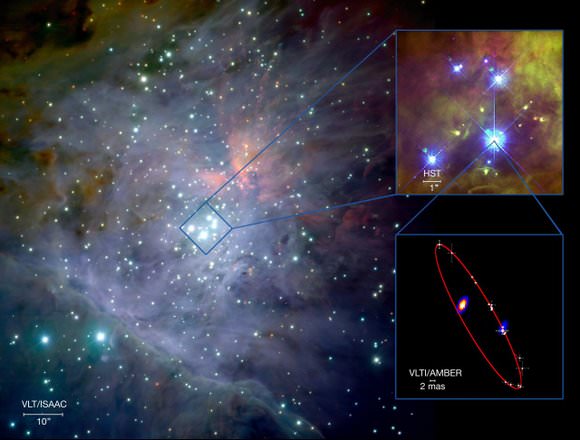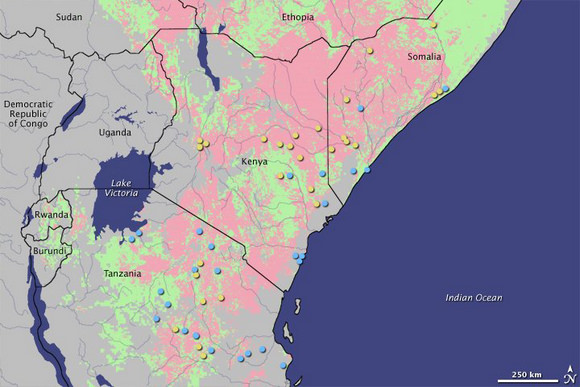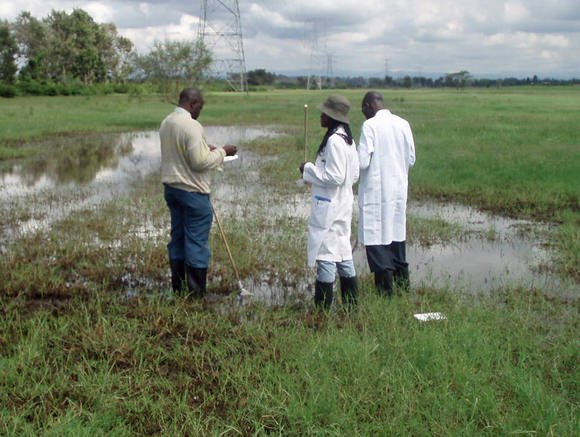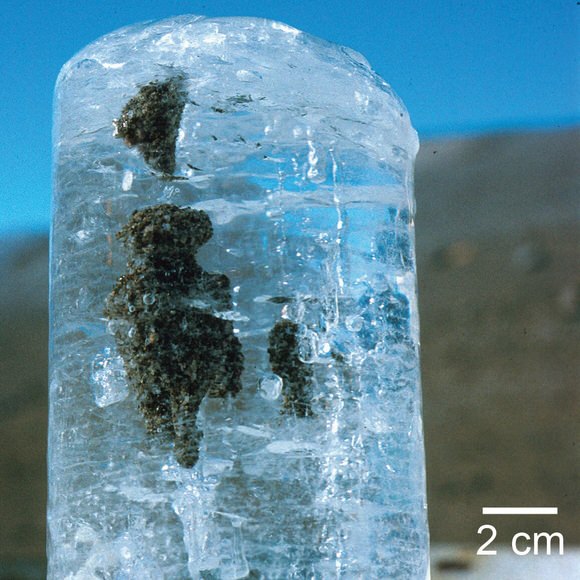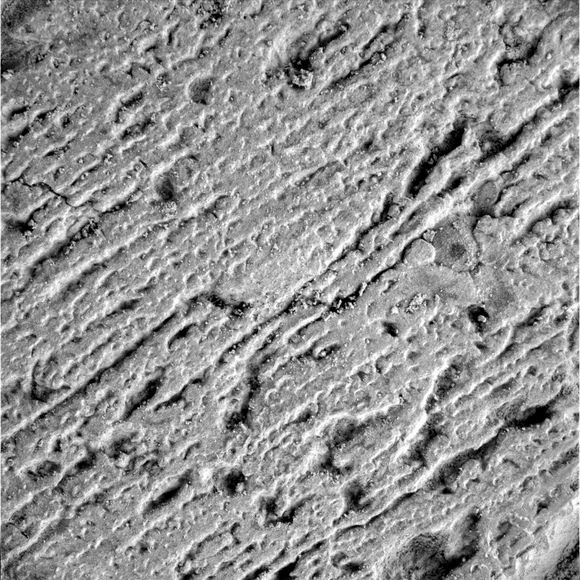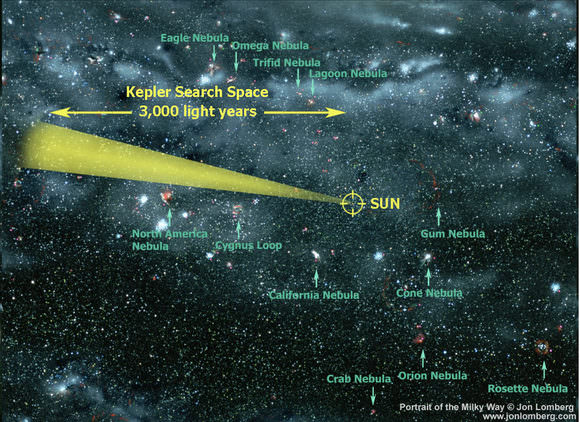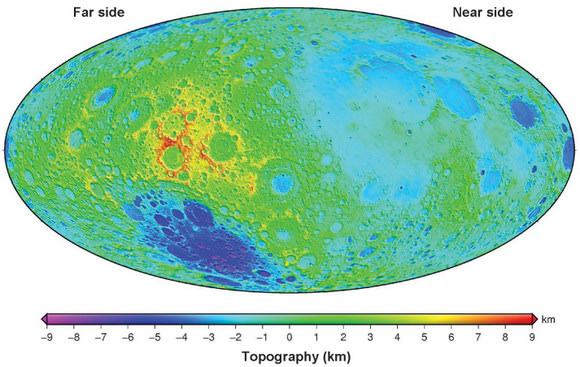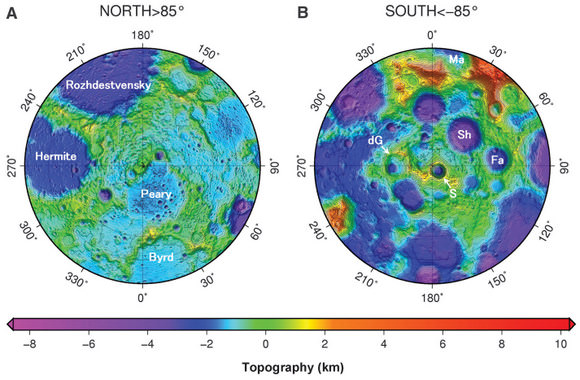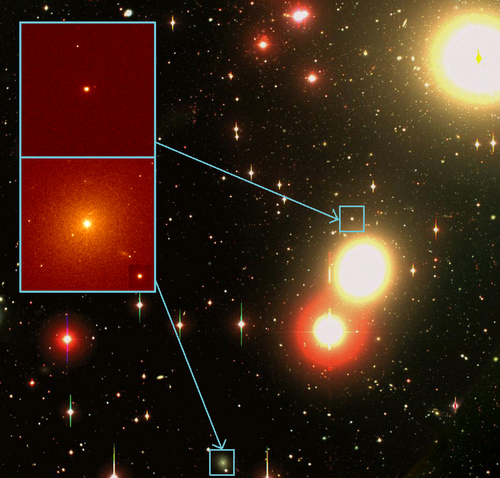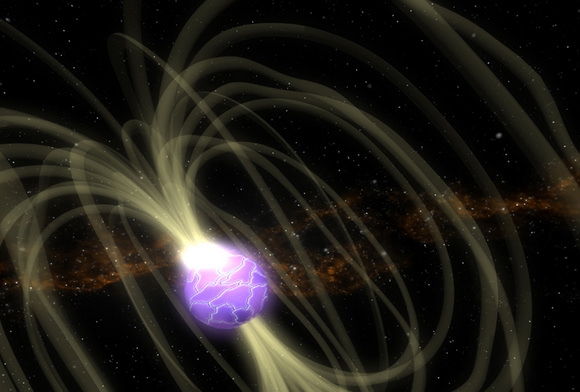- The first VLTI image shows the double star Theta1 Orionis C in the Orion Nebula Trapezium. Credit: ESO
European astronomers are celebrating two of the first images ever made using near-infrared interferometry, and say they herald the dawn of a new era of stellar imaging.
A German-led team has captured images of the double star system Theta1 Orionis C with ESO’s Very Large Telescope Interferometer, which emulates a virtual telescope about 100 meters (328 feet) across. That discovery could lead to a calculation of the orbits and mass of the system. And a team of French astronomers has captured an image of the star T Leporis revealing a spherical molecular shell around the aged star — which appears, on the sky, as small as a two-story house on the Moon. Both feats were announced today by the European Organisation for Astronomical Research in the Southern Hemisphere (ESO).
“We were able to construct an amazing image, and reveal the onion-like structure of the atmosphere of a giant star at a late stage of its life for the first time,” said the ESO’s Antoine Mérand, a member of the T Leporis research team. “Numerical models and indirect data have allowed us to imagine the appearance of the star before, but it is quite astounding that we can now see it, and in colour.”

Interferometry is a technique that combines the light from several telescopes, resulting in a vision as sharp as that of a giant telescope with a diameter equal to the largest separation between the telescopes used. Achieving this requires the VLTI system components to be positioned to extraordinary accuracy over the 100 meters (328 feet) and maintained throughout the observations — a formidable technical challenge.
When doing interferometry, astronomers must often content themselves with fringes, the characteristic pattern of dark and bright lines produced when two beams of light combine, from which they can model the physical properties of the object studied. But, if an object is observed on several runs with different combinations and configurations of telescopes, it is possible to put these results together to reconstruct an image of the object. This is what has now been done with ESO’s VLTI, using the 1.8-meter (6 foot) auxiliary telescopes.
The new T Leporis results are set to appear in a letter to the editor in Astronomy and Astrophysics, by lead author Jean-Baptiste Le Bouquin, also of the ESO, and his colleagues. The image of Theta1 Orionis C, in the Orion Nebula Trapezium, is reported in an Astronomy and Astrophysics article led by Stefan Kraus at the Max-Planck-Institut für Radioastronomie in Germany.
Although it is only 15 by 15 pixels across, the reconstructed image of T Leporis shows an extreme close-up of a star 100 times larger than the Sun, a diameter corresponding roughly to the distance between the Earth and the Sun. This star is, in turn, surrounded by a sphere of molecular gas, which is about three times as large.
T Leporis, in the constellation of Lepus (the Hare), is located 500 light-years from Earth. It belongs to the family of Mira stars, well known to amateur astronomers. These are giant variable stars that have almost extinguished their nuclear fuel and are losing mass. They are nearing the end of their lives as stars, and will soon die, becoming white dwarfs. The Sun will become a Mira star in a few billion years, engulfing the Earth in the dust and gas expelled in its final throes.
Mira stars are among the biggest factories of molecules and dust in the Universe, and T Leporis is no exception. It pulsates with a period of 380 days and loses the equivalent of the Earth’s mass every year. Since the molecules and dust are formed in the layers of atmosphere surrounding the central star, astronomers would like to be able to see these layers. But this is no easy task, given that the stars themselves are so far away — despite their huge intrinsic size, their apparent radius on the sky can be just half a millionth that of the Sun.
“Obtaining images like these was one of the main motivations for building the Very Large Telescope Interferometer,” Mérand said. “We have now truly entered the era of stellar imaging.”
Source: ESO

